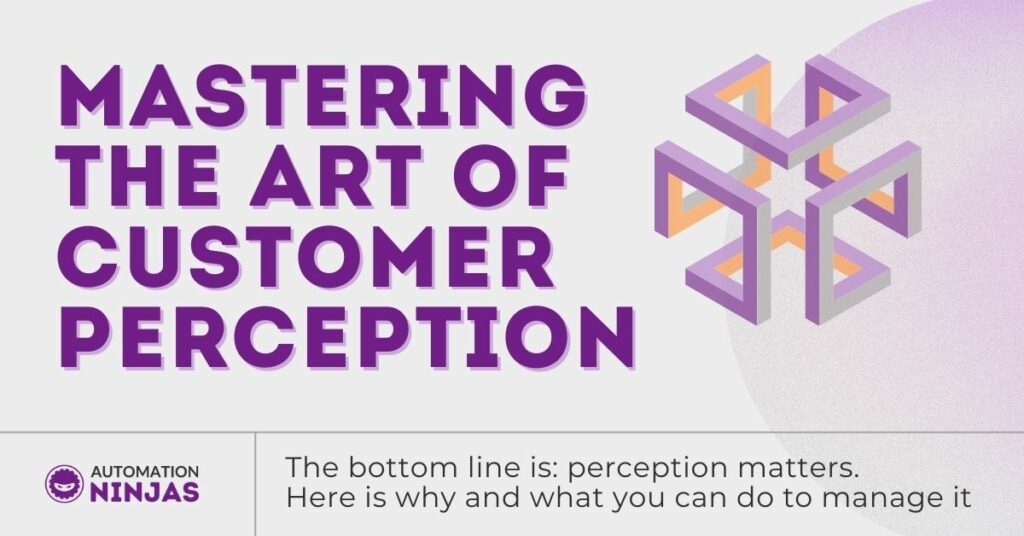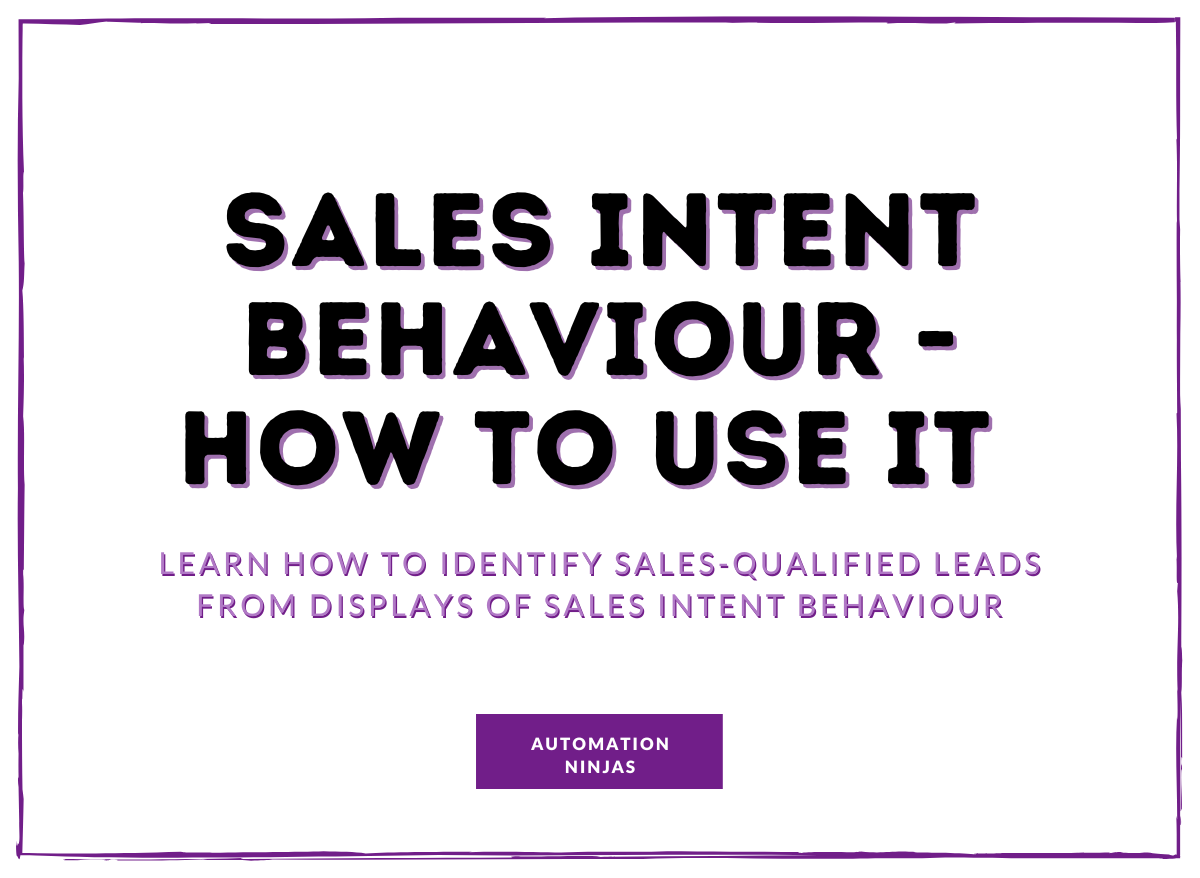In the intricate world of business, customer perception is everything.
It’s the subtle interplay between how your customers see your brand and the reality you’ve created. How your audience perceives your products, services, and overall brand can make or break your success in today’s fiercely competitive marketplace.
In today’s blog, we will deconstruct the concept of customer perception when it comes to marketing.
We’ll first look into what customer perception is, why it matters and then we’ll round up the blog by giving you a handful of different strategies that you can use to manage customer perception when it pertains to you and your business.
How your brand is perceived is as crucial as your product offerings and strategy. If the word on the street is that you’re not the best company to work with, your watertight customer journey or sparkling email marketing can only get you so far.
PWC found that, after just one negative experience, one-third of people would stop doing business with a company they were loyal to in the past.
This statistic shows us that customer perception truly does matter, and with one-third of people comfortable with walking out of your metaphorical door after one bad experience, it is something that you need to know how to manage.
Let’s jump in!
What Is Customer Perception?
Zendesk describes customer perception as: Customer perception is the opinions, feelings, and beliefs customers have about your brand. It plays an important role in building customer loyalty, retention, brand reputation, and awareness.
Essentially, it is how your consumers think and feel about your business, products and services. It is important to note that the feelings and thoughts of your consumers may not align with the service you think you have provided them as customer perception can change at the drop of a hat.
You could have provided excellent customer service throughout their time with you and ensured that you educated them and validated their concerns to move them through their customer journey.
However, let’s imagine that your postal provider falls short and there is an issue that delays delivery. While you have done your job correctly and the delay was out of your control, the customer in question could now want to find a different provider solely because you fell short on delivery.
Perception is not always equal to the truth and unfortunately, you can’t control that. But, you can manage it.

Why Does Customer Perception Matter?
It can be easy to feel like you have little to no control over how your consumers perceive you. (You absolutely do and we’ll jump into that soon). And, when many of us feel like we cannot control something, the logical thing to do is to stop caring about it, right?
In some cases, I would agree. But, as customer perception can impact your CLV, ROI and ultimately, your bottom line - it does matter and it should be something that you make a conscious effort to think about and manage where you can.
But, that leaves us more room to investigate: why does customer perception matter?
- Purchase decisions - Customer perception significantly impacts purchase decisions. When consumers perceive a brand or product positively, they are more likely to buy it. Favourable perceptions can drive sales and revenue, making it essential for marketers and brand owners to shape a positive image.
- Brand Loyalty - Positive customer perception fosters brand loyalty. When customers have a favorable opinion of a brand, they are more likely to return for repeat purchases and become brand advocates. This loyalty can directly lead to an increase in CLV and ROI.
- Competitive Advantage - In a competitive market, customer perception can set a brand apart from its competitors. A brand with a strong, positive image is more likely to stand out and capture a larger market share, even if similar products are available.
- Price Elasticity - Customer perception can influence price sensitivity. If a brand is perceived as high-quality and reliable, consumers may be willing to pay a premium for its products. On the other hand, if the perception is negative, price becomes a more critical factor, and customers may seek cheaper alternatives.
As you can see, while customer perception may be defined as the thoughts and feelings your customers harbor towards you and your brand, that perception shows up tangibly. Those thoughts and feelings turn into actions which can either benefit you or place you in a position of disadvantage.
Now that we’re clear on the why, let’s look at the how.
How To Manage Customer Perception
Many think that there is very little that you can do to change your customers' perception of you.
Now, if one customer in particular has had a bad experience and has decided to spend that money elsewhere, you might have to take that as a loss.
The good news is that there are ways for you to manage the perception your current and future customers have of you.
Here are some of the most effective ways that you can do it.
Stellar Customer Service
81% of people claim that good customer service makes them more likely to make another purchase. This may also seem to be basic and pretty simple. But, the reality is that many people aren’t feeling satisfied with the customer service they receive much of the time.
Imagine that you went to a restaurant and you loved the food. The only caveat is that the customer service was terrible. Your waiter didn’t listen to your allergen requests, was sarcastic or rude and made you feel unwelcome.
When you complained to the manager, they didn’t seem to care either. I would bet that no matter how much you enjoyed that food, you wouldn’t jump to visit there again anytime in the near future.
The notion is the same with your business. It doesn’t matter how good your offerings are if the customer service isn’t up to scratch.
Customer Success Stories / Testimonials
Customer success stories and testimonials are an incredibly powerful form of social proof. When prospective customers see that other people have had a positive experience with you that has benefited them, they are more likely to buy.
This is the same reason why many clothing companies allow you to review and comment on the items you have purchased for other users to see. You'll feel more inclined to buy if many people confirm the garment is well made!
- Related Content: What Are Useful Testimonials?
Social Responsibility
Social responsibility matters when it comes to customer perception. Many people want to know that their hard-earned money is going to a brand or business that aligns with and cares about their social values.
Gone are the days when businesses could take an apolitical stance on the goings on of the world.
Your customers want to know that you’re doing the right thing. If you’re unsure of what kinds of social causes your customers would like to see you support, you can run a poll or send a quick questionnaire to your list asking them about it.
Or, if you’re already actively fighting for any kind of social justice within your own life, you can extend that work to your business and show your customers what you’ve been doing behind the scenes.
Customers tend to better perceive businesses that take steps to give back to the community, protect the environment, and contribute to social causes. This positive perception can lead to a more substantial reputation for the company.

Keep Your Eyes Peeled
By keeping up with what is being communicated on social media about your business and product offerings, you can monitor the majority of customer perception of your business in real time.
If people are complaining or exclaiming about something, you’ll be one of the first to know and you can do what you can to manage it. By addressing negative reviews directly and promoting positive feedback, you can maintain a positive online reputation.
High Quality Products And Services
This point may be apparent without explanation, but make sure that your products and services do what they say on the tin!
Focus on delivering high-quality products or services that meet or exceed customer expectations. Consistency in quality can positively shape how customers perceive your brand.
There is no point in marketing a product with all of the bells and whistles if that isn’t the product they will receive.
Ensure that the product description matches the quality of the product or service. If at any point you find that you’re lacking, make a change and communicate that to your customers - it will work in your favor in the long run.
Transparency
Now more than ever, your customers are aware that it is a person who manages the business. And, humans are allowed to make mistakes. With that in mind, if something happens that will negatively affect your customers and is out of your control - communicate that with them and make an effort to mend any potential damage.
Your honesty and transparency will allow you to build trust with your consumers as they know honesty is one of your fundamental values. This action will enable you to manage customer perception and keep your customers around for the long haul.
Engage & Take On Feedback
One of the easiest ways for you to understand your business's current customer perception is to ask.

Ask about their current thoughts and feelings about your customer service, products, brand messaging, etc. By doing so, you will quickly become aware of the existing customer perception. From there, you can take on that feedback and make the changes to your business that your customers ask for.
Customer Centric Policies
Customer centric policies are a great way to make sure that the customer perception of your brand stays positive. Your customers want to feel like they are one of the focal points of your business (which of course, they should be).
If you don’t have any in place already, Develop customer-centric policies and make them visible to your customers. This could include return policies, guarantees, or loyalty programs.
Think of anything that could give your customers a little more bang for their buck and see how the perception will switch!
Let’s switch up that customer perception!
In conclusion, the world of business is not solely about products and services; it's also about perceptions.
Customer perception is a powerful force that can shape the fate of any company. It's not merely a passive response; it's a dynamic and malleable aspect of the customer experience that can be influenced and harnessed.
Understanding why customer perception matters is crucial for any business looking to thrive in a competitive market.
When customers perceive a brand positively, they are more likely to become loyal, advocate for the company, and even pay a premium for its products or services. On the other hand, negative perceptions can have far-reaching consequences, impacting not only sales but also a company's reputation and long-term success.
With this blog, you now have a handful of strategies you can use to master the art of customer perception.
If you still need a hand with customer perception or anything else to do with your marketing, click the button below and get in touch!
Until next time!






